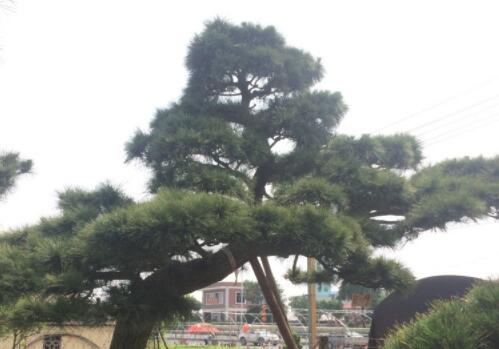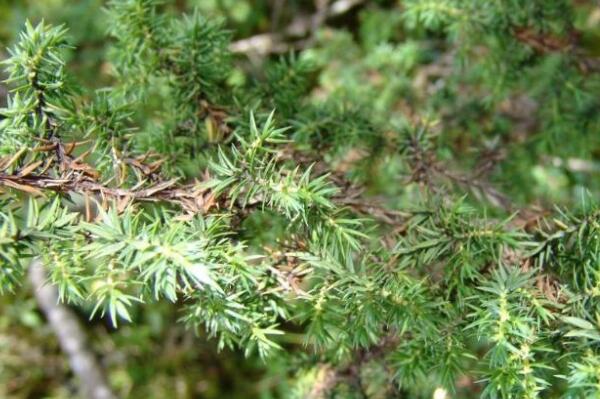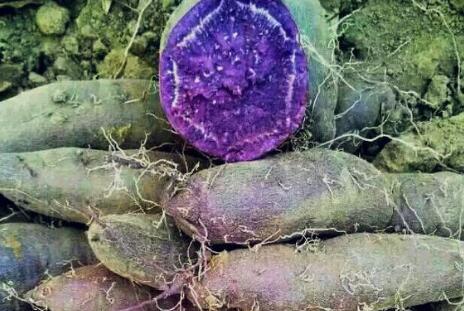How much is the price of evergreen trees and black pine seedlings? What's the difference between five needles and pine? Bonsai production and maintenance
Black pine alias white bud pine, evergreen tree, up to 30 meters high, gray-black bark, April flowering. It is native to Japan and the southern coastal areas of Korea. So how much is the price of black pine seedlings? What's the difference between five needles and pine? What are the methods of bonsai production and maintenance?

How much is the price of black pine seedlings?
The following is the finishing price for reference only:
Seedling name height (cm) diameter (cm) unit price (yuan) black pine seedling 8021.83.5 black pine seedling 12034.5 black pine seedling 1804121black pine seedling 2505651black pine seedling 3006800.180 black pine seedling 35081303black pine seedling 450102300500
What is the difference between black pine and five-needle pine?
Pine with five needles. Needles: five needles in a bunch, thin, short and dense, with white stomatal lines, blue-green leaves. Bark: grayish, smooth when young, orange-brown when old. Scaly flakes peeling off. Color: rose red.
Black pine. Needles: two needles are a bunch, and the needles are long. Twigs orange and yellow. Bark: grayish black. Irregular flake exfoliation. Color: yellow.
What are the production and maintenance methods of black pine bonsai?
Production:
1. When mining, the mining face should be expanded, and attention should be paid to carrying as much soil as possible. Because black pine grows in the sand and gravel soil on the hillside, the soil is less, and the weather is dry in winter, and the soil contains less water and poor stickiness, so it is necessary to protect the root soil as much as possible when mining. Because the root soil is rich in root mold, it is a symbiotic fungus of Pinus koraiensis, which is very conducive to root growth. After excavation, plastic bags should be used to make simple bandage in time to prevent soil loss during handling and facilitate transplanting.
2. When digging, we should pay attention to protect the root system of black pine, start digging a little farther away from the pine tree, first dig out the surrounding soil, keep the main root as much as possible, cut off the root smoothly, cut off the rotten root, and avoid damaging the root system as far as possible. Especially the lateral root and fibrous root of black pine in sand and gravel, the root system is weak, stay as long as possible, and should be protected especially when digging.
3. The black pine dug back should be buried in time, and the faster the better, the longer the time will cause the root to lose water and dry up, which will affect the survival. In order to prevent the roots from being buried too deep, we can take high planting and shallow planting, and then add soil to cover it. Those who have no conditions to cultivate in the field should be pots in time.
4. The upper basin of black pine is very important. Before cultivation, gravel and tiles of the basin bottom cushion are first used to facilitate ventilation and drainage, and then fill the surrounding area with soil. The gap in the soil is too large, it is easy to cause frozen roots, the basin is covered with grass curtain to prevent freezing. The original soil on the mountain is the best for the soil, and the mixture of coarse yellow sand, coal ash and yellow mud can also be used, and the proportion is 0.5-0.25-0.25. It should be fortified in time after potting, too many branches and leaves will affect the insufficient water supply of roots and consume a lot of water and nutrition.
Maintenance:
1. Environment: black pine is cold-resistant and drought-resistant, and can be placed on the courtyard slope and balcony all the year round, where the light is sufficient and the air flows. However, small bonsai should not be exposed to strong light at the height of summer. Winter can be overwintered in the open field, it is best to bury the basin in the sunny leeward place. If you spend the winter indoors, the room temperature should not be too high, Ching Ming Festival can move to the outside.
2, watering: black pine likes to dry and avoid stagnant water, watering should not be excessive, only when it is dry, it will be watered thoroughly. Proper water control during the growing period can make the branches thick and short, the needles short, and increase the ornamental value. When it is hot in summer, foliar water can be sprayed frequently, which is beneficial to growth.
3. Fertilization: black pine is resistant to barren, the soil is short of fertilizer, can also grow normally, and promote short stem, dense branches and short leaves. However, the proper application of thin and rotten cake fertilizer and water during the growing period is beneficial to robust growth and increase the ability of resistance to diseases and insect pests.
4. Pruning: in order to maintain its beautiful and quaint tree shape, black pine bonsai should be pruned properly. During the growing period, the main pruning is to pick buds, 3 to 4 evenly every year. When the new buds elongate but have not yet produced needles, about 1 / 2 of each top bud can be removed. If the bonsai with growing branches is not needed, all the terminal buds can be removed. The branches that affect the appearance of the tree can be pruned during the dormant period.
5. Turn the basin: the black pine bonsai is usually turned once every 3 to 5 years, and it is suitable to be carried out from February to March. When turning the basin, it is necessary to keep the original basin soil intact, remove 1 inch and 2 old soil, cut off overgrown roots, as well as withered and rotten roots, and trim some unnecessary branches and leaves to maintain the balance between the upper and lower parts of the basin soil. If the capacity of the original basin is not enough, it can be replaced with a slightly larger new basin, and the planting method is the same as that of the upper basin.
Time: 2019-03-19 Click:
- Prev

How much is the price of evergreen small trees juniper seedlings? Can I keep it at home? Can you make bonsai? How do you plant it?
Juniper, also known as juniper, dwarf cedar, Bama, Taiwan juniper, Taiwan pine, cedar, rock cedar, grass green cypress, is a small evergreen tree with a cool climate and strong cold resistance. How much is the seedling of juniper? Can I keep it at home? Can you make bonsai? How do you plant it? How much is the price of juniper seedlings?
- Next

How to grow purple potato of Convolvulaceae? Where is the best place to grow? How many jin per mu?
Purple potato, also known as black potato, vetch potato and so on, is a popular planting project among growers in recent years, with the characteristics of less input and more output. How do you grow purple potatoes? Where is the best place to grow? How many jin per mu? How to grow purple potatoes? Where is the best place to grow? I. selection of improved varieties
Related
- Fuxing push coffee new agricultural production and marketing class: lack of small-scale processing plants
- Jujube rice field leisure farm deep ploughing Yilan for five years to create a space for organic food and play
- Nongyu Farm-A trial of organic papaya for brave women with advanced technology
- Four points for attention in the prevention and control of diseases and insect pests of edible fungi
- How to add nutrient solution to Edible Fungi
- Is there any good way to control edible fungus mites?
- Open Inoculation Technology of Edible Fungi
- Is there any clever way to use fertilizer for edible fungus in winter?
- What agents are used to kill the pathogens of edible fungi in the mushroom shed?
- Rapid drying of Edible Fungi

